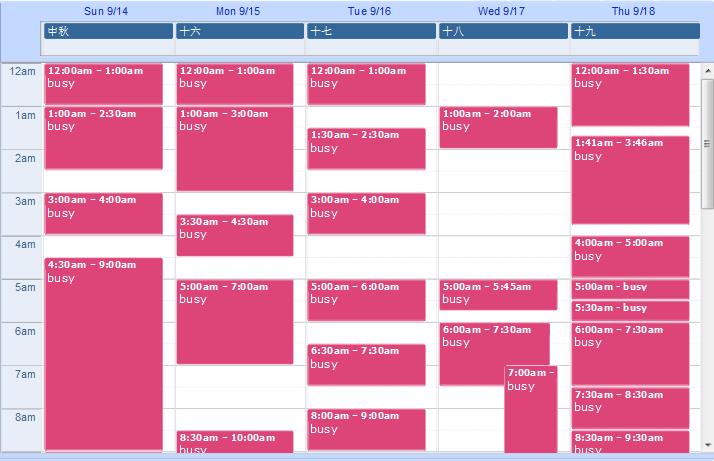This is part of a series article: From Shanghai to US – A Handbook. These articles are to help my friends (obviously in Shanghai) to plan their first time visit to U.S. To be concise, I only outline information that I think helpful for this group of people. So don’t be surprised if it left some important information outside the scope.
I will cover about grand transportation about people from China arrives in U.S. later, but this time, I will talk about renting a car in U.S. with Chinese Driver’s License.
Motivation to Learn to Drive
The matter of fact in China is, most people don’t have a car, like I did in my first 5 years after graduate.
And most people don’t even plan for that, since there are just enough dreams to be filled before a car. Also, the great public transportation system in every city in China makes it possible to live wonderful life without a car. In Shanghai, for example, Metro, buses, and taxis are easily accessible.
But believe me, everything people go back from the States, there is strong desire to learn to drive, since people found it is so convenient to have a car and drive around in the vast west of the country, and the life is so hard without a car. In Seattle, for example, although the Homestead is just several blocks away from Microsoft campus, it still takes much time to walk, not to mention the nearest shopping center. Taxi works different in U.S., it is cheaper to rent a car than taxi, and you have to call and wait for 15 minutes for a taxi.
So every time I got back from the State, I promised I will learn to drive and get a driver’s license.
If you are going to U.S., or plan to do so, I suggest you get a driver’s license ASAP. It will save you much time and money in U.S.
How the Driver’s License from Chinese works in the States
Basically, driver’s license in China works well in U.S. I didn’t find any documents, but it worked for me at least in both AVIS in Seattle Airport, WA, or San Francisco Airport, CA.
The Chinese driver’s license only have Chinese characters, not any English words there. I believe they can only tell it is your document from the photo. It seems when the inspector feels you are confident enough to tell them it is the government issue valid license, they accept it.
It worked out once in AVIS at SFO airport, when I forgot to bring an English copy.
If you want to be safe, and show respect to car rental companies, you can bring an English translation of the driver’s license with you.
Here is the sample created by Edward Wang
Driving License of The People’s Republic of China (Original)
License No. : 3521011977xxxx08xx
Name: Wang Qingsheng Gender: Male Birth Date: xxxx, 1977
Address: Rm 415, No. 230, Jiujiang Road , Huangpu district
Stamp of Issuing Authority
Date of Issue: June 8, 2004
Vehicle Type : C
Effective Period : From June 8, 2004 to June 8, 2010
Shanghai Municipal Public Security Bureau , Public Security and Traffic Administration Bureau , Vehicle Administration Office
I used the template and print it out with my printer. It works like a charm in U.S. You also can get an official translation from the government agencies and pay for that. For me, I don’t think it is necessary.
Other Tips
Do reserve before you go.
Logon to either AVIS, or HERTZ. Don’t expect cars available for you at airport. Last time, I went there, and found there is no cars available. It is good that I have reserved one. How disappointing it is when you plan to travel by car but find out they don’t have one for you.
Also, almost all cars are automatic shift cars. In China, many people drive manual shift cars. The change is not challenging at all. It is much easier to drive auto-shift car even though you never touch it before. Put the shift to “D”, and everything works well.
There are two gas plan – one is getting the car at full gas, and fill it to full. The other option is to let the rental company do it for you, but the gas is a little bit more expensive.
I would suggest to have the rental company to fill the gas for you. You may not be familiar with the location of gas station; what type of gas you should fill, and even how to operate the the machine. So leave the challenging work to the next time.
Last but absolutely not least, drive safely. I know people who killed themselves at highway in U.S. If you are not sure, do not drive at all. Also, do not drive if it is your first time to visit the States. You should sit in a car to watch how cars and roads work before you actually drive.
Good luck!


 United Airlines
United Airlines





